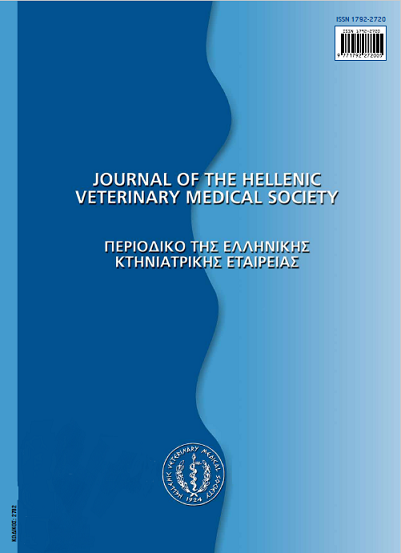Visceral Leishmaniosis and Canine Leishmaniosis in Greece and other mediterranean countries
Аннотация
The prevalence of canine leishmaniosis in mediterranean countries varies from 0.2% to 67% and annually, 1.4-300 cases of human infection are reported in each country. In Greece, 0.7-48.7% of dogs, 3.9% of cats, 1.2% of rodents (Citellus citellus) and 3.9-9.2% of inhabitants are seropositive, whereas 25 cases (mean annual rate) of visceral leishmaniosis are reported each year. As vector of the visceral leishmaniosis in Greece is considered the sand fly P. neglectus (0.12% infected by L. infantum) and additionally, as possible vectors the species P. sergenti, P.balcanicus and P.simici. No proven vector for the transmission of canine leishmaniosis has been found in Greece. As possible vectors are suspected P. perfìliewi and P. tobbi. No direct relation has been found between the incidence of canine leishmaniosis and the cases of the human infection in Greece. The sand flies and its preferable hosts in Greece are: P. neglectus (catde, horse, swine, rat, rarely human and never the dog), P. perfìliewi (dog, fox, catde, sheep, horse, swine, hare, rabbit, rodents), P. tobbi (sheep, dog, rabbit), P. balcanicus (bat, human), P. simici (rabbit, bat, human), P. papatasi (human), P. sergenti (human, rabbit, bat), P. similis (bat, rarely the human), P. alexandri (human, rodents), P. mascittii (dog, fox, human), Sergentomyia minuta (lizard, probably the fowls) and S. dentata (lizard, probably the fowls). The outcome of the disease is determined by a Th2 pattern (while Thl pattern results an effective cellular response and the self limitation of the disease) and the rupture of monocytes/ macrophages (multiplication of parasite), which is resulting in the lessions and the disfunction of spleen, bone marrow, liver, skin, lymphnodes, intestine, eye, membrane e.t.c, through the chronically high concentrations of immunocomplexes and the activation of complement (classic way) e.t.c. Mostly, diagnosis is established by the detection of the parasite and the detection of anti-leishmanial antibodies. The commonly used drugs to treat canine leishmaniosis are leishmanicids (meglumine antimoniate, aminosidine sulphate), leishmaniostatics (allopurinol, ketoconazole), immunostimmulants e.t.c. Repellents and insecticids (collars, shampoos, sprays) should be used to protect the dogs from May to November, while the infected dogs should be early diagnosed and treated.
Article Details
- Как цитировать
-
CHARALABIDIS (Σ. Θ. ΧΑΡΑΛΑΜΠΙΔΗΣ) S., & DIAKOU (Α. Ν. ΔΙΑΚΟΥ) A. (2017). Visceral Leishmaniosis and Canine Leishmaniosis in Greece and other mediterranean countries. Journal of the Hellenic Veterinary Medical Society, 55(3), 247–261. https://doi.org/10.12681/jhvms.15100
- Выпуск
- Том 55 № 3 (2004)
- Раздел
- Review Articles
Authors who publish with this journal agree to the following terms:
· Authors retain copyright and grant the journal right of first publication with the work simultaneously licensed under a Creative Commons Attribution Non-Commercial License that allows others to share the work with an acknowledgement of the work's authorship and initial publication in this journal.
· Authors are able to enter into separate, additional contractual arrangements for the non-exclusive distribution of the journal's published version of the work (e.g. post it to an institutional repository or publish it in a book), with an acknowledgement of its initial publication in this journal.
· Authors are permitted and encouraged to post their work online (preferably in institutional repositories or on their website) prior to and during the submission process, as it can lead to productive exchanges, as well as earlier and greater citation of published work.



